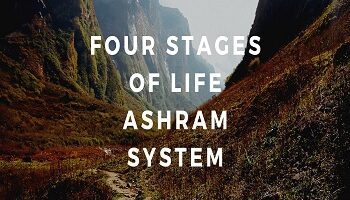Table of Contents
Sacred Complex:
The study of Civilization and the concept of Great and Little Tradition led to many methodological innovations. Redfield and his students, Marriott and Singer, proposed a number of concepts and terms to facilitate the study of the complexity of Indian Civilization and emphasized the cultural role of the cities. The singer proposed the concepts of cultural centres, cultural performances, cultural specialists, cultural media etc.
Vidyarthi (1961) selected Gaya in Bihar for an intensive study of a holy city as a dimension of Indian civilization. Substituting Singer’s term “cultural” by “Sacred”, Vidyarthi proposed the concept of Sacred Complex with three components- Sacred Geography, Sacred Performances and Sacred Specialists. A sacred complex is an intricate and interdependent grouping of sacred centres, sacred performances and sacred specialists; and is in cultural and structural relationship with the whole Hindu civilization. For his study, he formulated three hypothesis-
- That the sacred complex of a Hindu place of pilgrimage reflects a level of continuity, compromise and combination between great and little traditions.
- That the sacred specialists of a place, with their distinctive style of life, transmit certain elements of great tradition to the rural population of India.
- That the sacred complex has been in the process of modification and transformation.
The major findings in his studies are the following:
Sacred Geography:
Any holy city has two main parts- sacred and secular. The sacred part (Kshetra) is further divided into zones, segments and clusters of sacred centres. It is a sacred centre which is most important because rites are performed here, and it may be an idol in a temple, a tree, a bathing ghat etc. The Sacred Geography may be explained through the following chart-

Each centre has its own importance, and may have varying spread local, district, state, Hindu universe.
Sacred Performances:
These are sets of rites and rituals performed by the worshipper and different sacred centres and vary with the nature and importance of each centre. These may be a recitation of mantras, meditation, floral offerings, oblations, donations, artistic performances etc.
Gaya has a unique place in the Hindu world, as the final rites for the ancestral spirits are performed here the Gaya Shraddha.
Sacred Specialists:
They are the priests associated with different centres and help the worshippers and pilgrims in the sacred performances. They are also associated with different parts of India, and consider the pilgrims coming from those parts as their clients exclusively. In Gaya, they are called Gayawal Brahmins and hold a monopoly over Gaya Shraddha.
Vidyarthi concludes that the sacred complex at Gaya is great traditional in content but incorporates elements of little traditions as well. It had played an integrating role in Hindu civilization by providing a meeting place for different kinds of people and traditions of castes and sects of classes and by communicating with every corner of India through priestly relationship.
After Vidharthi, a number of his students have examined the concept at different places of pilgrimage and holy cities. Some of them are B.N. Saraswati’s “Holy Circuit of Nimsar” (1962), “Temple Organization in Goa” (1965) and “Sacred Complex in Kashi” (1978); M. Jha’s “Sacred Complex of Janakpur” (1971) and “Sacred Complex of Ratanpur” (1978), Upadhyay’s “Sacred Geography of Dwarka” (1974), S. Narayan’s “Sacred Complex of Deoghar” (1972), M.Mohapatra’s “Lingraj Temple- its Structure and Change” (1971) etc.
Of these, Jha’s work deserves special mention. He has studied the sacred complex in detail and has refined it. He suggested that a regional approach, “Civilizational regions”, maybe more useful. Each region has a civilizational centre, serving as sacred and secular capital of the region, and a set of lesser-known sacred complexes.









Comments (No)